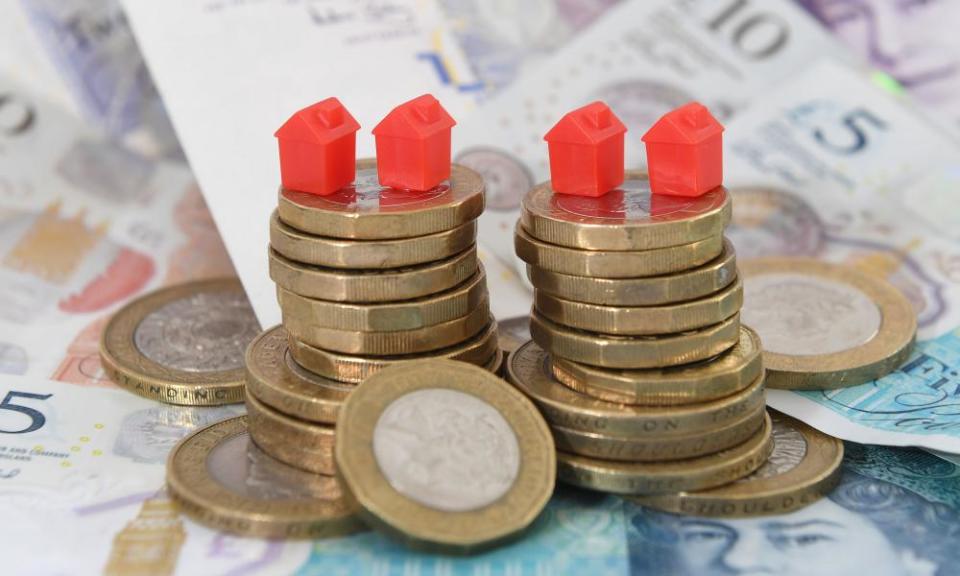Homeowners face biggest hike in mortgage costs since 2008

Homeowners face the biggest rise in mortgage costs since the financial crisis, with the amount of interest they pay set to jump by 13% in 2023, data from the government’s independent forecasting unit suggests.
Related: Wage squeeze will leave average worker almost £13,000 worse off, Sunak warned
Politicians and analysts seized on a table “buried” in a report published by the Office for Budget Responsibility (OBR) alongside the budget, which stated that mortgage interest payments were set for their biggest rise since at least 2008.
The Liberal Democrats said the data indicated householders with the average mortgage of £211,000 could see their payments go up by more than £500 a year, while the investment firm AJ Bell said some people with larger mortgages could have to pay more than £1,000 extra a year.
Interest rates are at a historic low of 0.1%, but the financial markets have priced in a rate rise when the Bank of England meets next week, which could lift the base rate to 0.25%, and then a 0.25-point increase in December. With two more 0.25% hikes forecast for next year, that could take the base rate to 1% by the end of 2022.
Banks and building societies have already started pulling their cheapest mortgage deals from the market, with some brokers saying that price changes had been coming “thick and fast” during the past few days.
The OBR figures for predicted year-on-year growth in mortgage interest payments – included in one of the main report’s supplementary tables – suggests homeowners need to be braced for a 5.6% increase in costs next year, rising to 13% in 2023 before falling back to 5.4% in 2024.
The 13% figure is by far the highest in the table, which goes back to 2008 and looks forward as far as 2026. By comparison, this year is set to see an average fall in mortgage interest costs of 2.5%, according to the OBR data.
While the table did not go into detail about precisely what these increases meant in pounds and pence, this did not stop commentators from getting the calculators to work out how households may be affected.
Related: How to inflation-proof your finances
The Liberal Democrats were among the first to seize on the figures. They said they indicated that an average borrower on a standard variable rate of 3.26% would see their payments go up by more than £42 a month, or £510 over a year. For a fixed-rate home loan of 2%, the increase would be £25 a month, or £300 a year.
Sir Ed Davey, the Liberal Democrat leader, said: “This ghastly forecast should send a shiver down the chancellor’s spine.”
AJ Bell said the data suggested that those who signed up to a record low two-year fixed-rate deal earlier this year could face a big rise when they came to remortgage in the first half of 2023.
“Someone with £250,000 of borrowing who fixed earlier this year and renewed in 2023 would see £600 a year added to their mortgage costs, while someone with £450,000 of borrowing would see their costs hike by £1,068 a year,” said Laura Suter, head of personal finance at the firm.
She added that someone on a current average variable rate deal of 2.4% and who had a £250,000 mortgage could see their annual costs increase by £696 by 2023, while those with £450,000 of borrowing would see their costs rise by £1,260 a year.
Banking industry data shows that a sizeable majority of borrowers (74%) are currently on fixed rates and so are protected from any rate rises in the immediate term.
